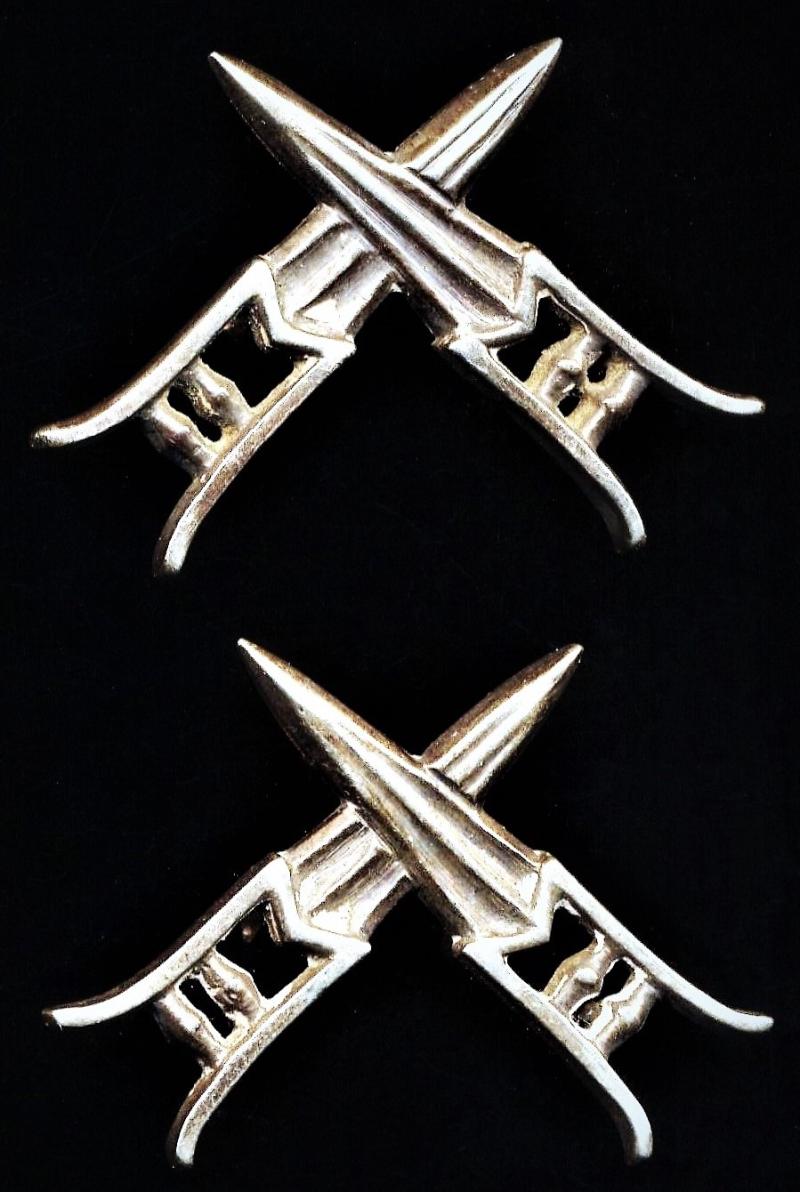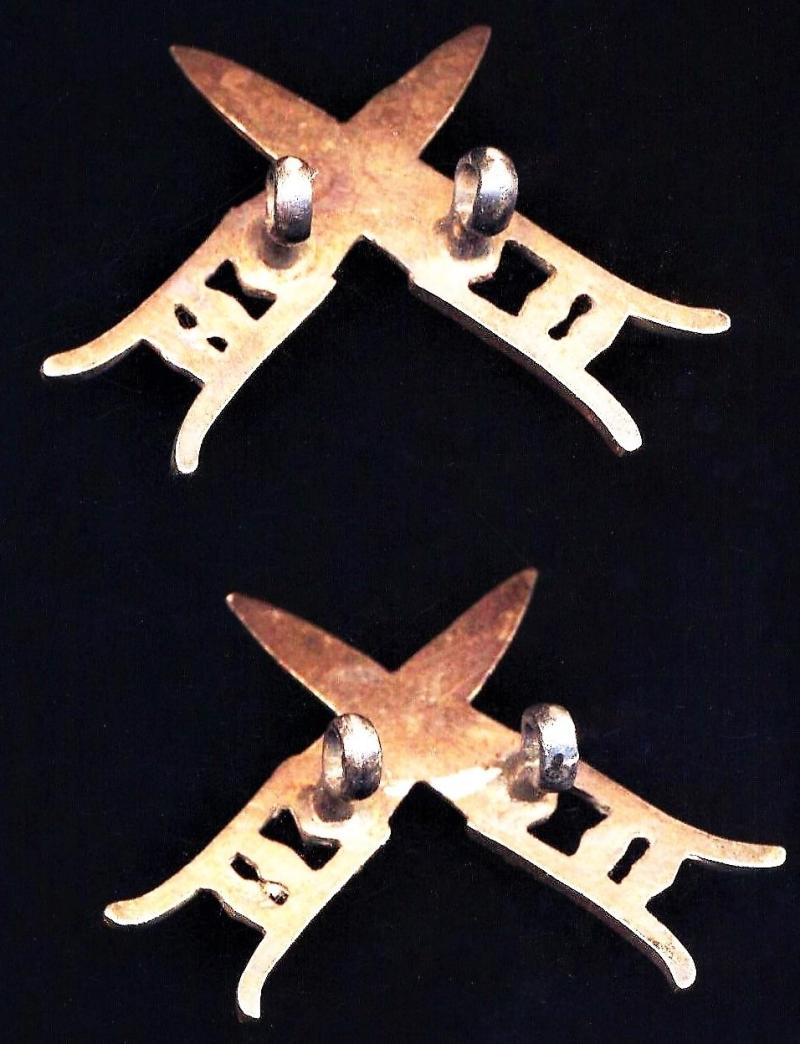British Indian Army: 13th Raputs. Pair of 'Officer's silver or silver plated (not h/m) regimental collar badges, worn 1903-1922
Reverse of both badges complete with their original silver or silver plated, loop fittings, as issued & as worn
An inspired choice of regimental insignia comprising 2 x pairs of crossed 'Katar's' - the traditional Rajput thrusting dagger
The Shekhawati Regiment had their origins dating back 1835 when they were raised as part of the Jaipur contingent and were, eight years later taken into the Honourable East India Company's service as a local battalion of the Bengal Army. The Rajputs are recorded as fighting with distinction at Aliwal under Harry Smith in 1846, during the First Anglo-Sikh War. In 1847 they were restyled as the Shekhawati Battalion. The unit remained loyal during the Indian Mutiny, and they were later taken into the 'Regular' Bengal line. In 1903 the regiment was restyled 13th (Shekhawati) Rajput Infantry, and in 1922 became the 10th (Training) Battalion 6th Rajputana Rifles
Positively attributed: From the regimental uniforms worn during the period 1920-1946 by Colonel Brian Lytton Cole, late Chief Civil Liaison Officer, formerly Commandant of 1st (Wellesley's) Battalion 6th Rajputana Rifles and late 13th Rajputs, whose medals and various insignia are being sold in various separate lots on the website
Brian Lytton Cole, son of Henry Hardy Cole (Captain, Royal Engineers, Indian Service) & Catherine Jane Cole (nee Cooper, an Irish woman from Co. Sligo) was a 'Son of the British Empire' born in, Simla, British India on, 26 May 1880. Like his father before him, Brian chose a military career, and on, 25 June 1899, having prior been a Gentleman Cadet at the Royal Military Academy, was commissioned as a Second Lieutenant in the Royal Regiment of Artillery, of the British Army. Promoted Lieutenant in 1901, in same year he transferred to the British Indian Army, and was posted to the 13th (Shekhawati) Rajput Infantry - and the start of his more then 40 years association and service with Rajputs and Rajputana. During the Great War, Brian served with the 13th Rajputs as a Double Company Commander, at the Battle of Tanga, German East Africa, where on 4th November 1914, he was severely wounded-in-action, and captured by the German Colonial Force - the hard fighting Askaris of the 'Schutztruppe' - commanded by the legendary Paul Emil von Lettow-Vorbeck, also called the Lion of Africa (Löwe von Afrika). Granted release on 'Parole', Brian was repatriated to British India, where he remained for the duration of the war. Post war, he held the prestigious regimental appointment as Commandant (Commanding Officer) of 1st (Wellesley's) Battalion 6th Rajputana Rifles. Brian Lytton Cole (53) described as 'Lt-Colonel (Retd)' married Margaret Winifred Hume (31), described as 'Doctor M.B., Ch.B', at, St. Andrews (Scottish Mission) Chandpole Church, Jaipur, on 9 January 1934. Brian Cole remained resident in Rajputana the rest of his life, and during the Second World War, was back in uniform holding the rank of Colonel & the appointment of 'Chief Civil Liaison Officer, Rajputana & Central India' - the National Archives in New Delhi having numerous files pertaining to his service in Rajputana during the War Years. He was released from his appointment on, 10 June 1946, and died at his home at Ajmer, Rajputana on 30 December 1946
Condition: GVF
Code: 22426
125.00 GBP






